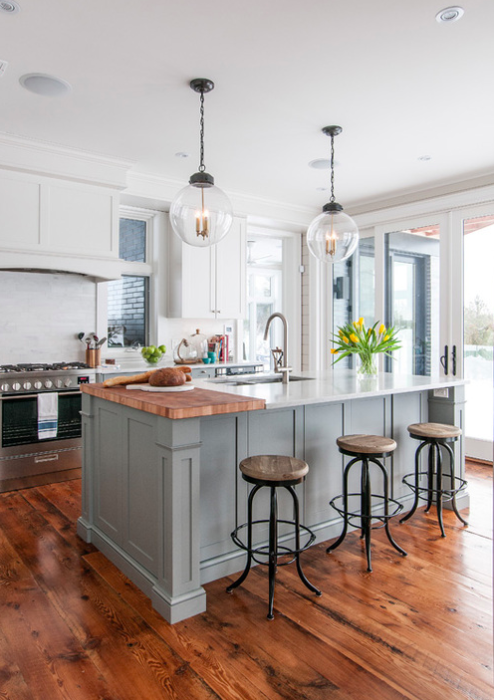How to Install a Kitchen Island Leg for Maximum Stability and Style
The Relevance of a Sturdy Cooking Area Island Leg in Creating a Useful Food Preparation Area
A strong kitchen island leg works as a basic component in developing a functional cooking atmosphere, providing required assistance for both the countertop and numerous kitchen tasks. The stability it provides can considerably lower the risk of crashes in high-traffic locations, while additionally adding to the general visual coherence of the room. As kitchens develop into multifunctional areas for cooking, eating, and interacting socially, the choice of products and style factors to consider for island legs ends up being significantly essential. Comprehending these components can change your kitchen area into a more secure and extra effective location, motivating further exploration right into the very best choices offered.
Advantages of Sturdy Island Legs
Giving vital assistance, tough kitchen area island legs play an essential duty in improving the functionality and toughness of kitchen islands - kitchen island leg. These legs not only bear the weight of the kitchen counter and any added items positioned on the island, yet likewise add to the general stability of the structure. A well-supported kitchen area island makes certain that it stays useful and upright, also under hefty use, which is especially crucial in active cooking area atmospheres
Furthermore, sturdy island legs can boost the aesthetic charm of the kitchen. They provide a strong framework that can match various design styles, from modern to standard. This convenience enables homeowners to personalize their kitchen area islands according to individual taste while ensuring that the architectural honesty stays uncompromised.
In enhancement to their supportive role, durable kitchen island legs can likewise enhance safety. Eventually, spending in tough kitchen area island legs is crucial for a useful and visually pleasing cooking location.
Materials for Kitchen Area Island Legs
When choosing materials for kitchen island legs, longevity and aesthetic allure are essential elements to consider. One of the most typical materials consist of wood, steel, and crafted timber, each offering one-of-a-kind benefits.
Hardwood, such as cherry, maple, or oak, is a traditional choice because of its toughness and classic appeal (kitchen island leg). It can stand up to substantial weight and is resistant to wear, making it ideal for high-use kitchen area settings. Additionally, wood can be tarnished or painted to enhance different cooking area designs
Metal legs, frequently crafted from stainless steel or wrought iron, supply a industrial and contemporary appearance. They are exceptionally solid and can sustain substantial lots while being immune to moisture and warmth, which is helpful in a cooking location. Metal legs can also be conveniently cleaned, boosting their usefulness.

Design Considerations for Stability
The selection of materials for kitchen area island legs directly influences the design factors to consider for security. When making a kitchen island, it is vital to evaluate the weight-bearing ability of the chosen materials. Larger materials, such as strong timber or metal, generally supply greater security, especially under the anxiety of daily usage.
In addition, the leg style must incorporate proper navigate to this site geometry to improve stability. A wider base enhances the support location, reducing the risk of tottering or tipping. Factor to consider must additionally be offered to the height of the legs; out of proportion leg lengths can result in inequality, endangering the total stability of the island.
In addition, the circulation of weight throughout the island is crucial. Ensuring that the leg positioning lines up with the heaviest elements, such as countertops and devices, will certainly additionally enhance stability.
Upkeep Tips for Longevity

Depending on the product of the legs-- whether wood, metal, or composite-- appropriate cleansing approaches must be utilized. Steel legs may call for a light gloss to prevent rust and preserve their appeal.
Furthermore, tightening up screws and screws on a regular basis can make certain security and stop tottering. If the cooking area island experiences heavy usage, consider enhancing the legs with extra braces or supports to enhance sturdiness. Applying a protective finish or sealant can guard against dampness and stains, prolonging the lifespan of the legs. By complying with these upkeep tips, home owners can guarantee their kitchen island legs stay functional and durable for several years to come.
Picking the Right Leg Style
Regular upkeep makes sure that cooking area island legs stay practical and strong, but selecting the appropriate leg style is just as crucial for both visual appeals and assistance. The selection of leg style can considerably affect the total layout and harmony of your cooking area.

Capability is one more important aspect. As an example, thicker legs or those with a sturdy base can support larger kitchen counters and equipment, enhancing the island's energy. Alternatively, slender legs might create an airy appearance, ideal for lighter layouts but potentially much less helpful.
Verdict
In summary, the relevance of strong kitchen area island legs can not be overstated in the production of a practical cooking area. These legs supply necessary assistance, enhance security, and contribute to the overall visual of the kitchen area.
A sturdy cooking area island leg serves as a basic part in developing a practical food preparation environment, offering necessary support for navigate here both the counter top and various cooking area activities.Giving essential support, sturdy kitchen area island legs play a pivotal function in enhancing the performance and resilience of kitchen islands. Eventually, spending in strong kitchen island legs is necessary for a functional and visually pleasing cooking location.
Factor to consider ought to additionally be provided to the elevation of the legs; disproportionate leg sizes can lead to imbalance, jeopardizing the total stability of the island.
Wooden legs give warmth and a traditional appearance, while steel legs offer a modern-day and industrial feeling.